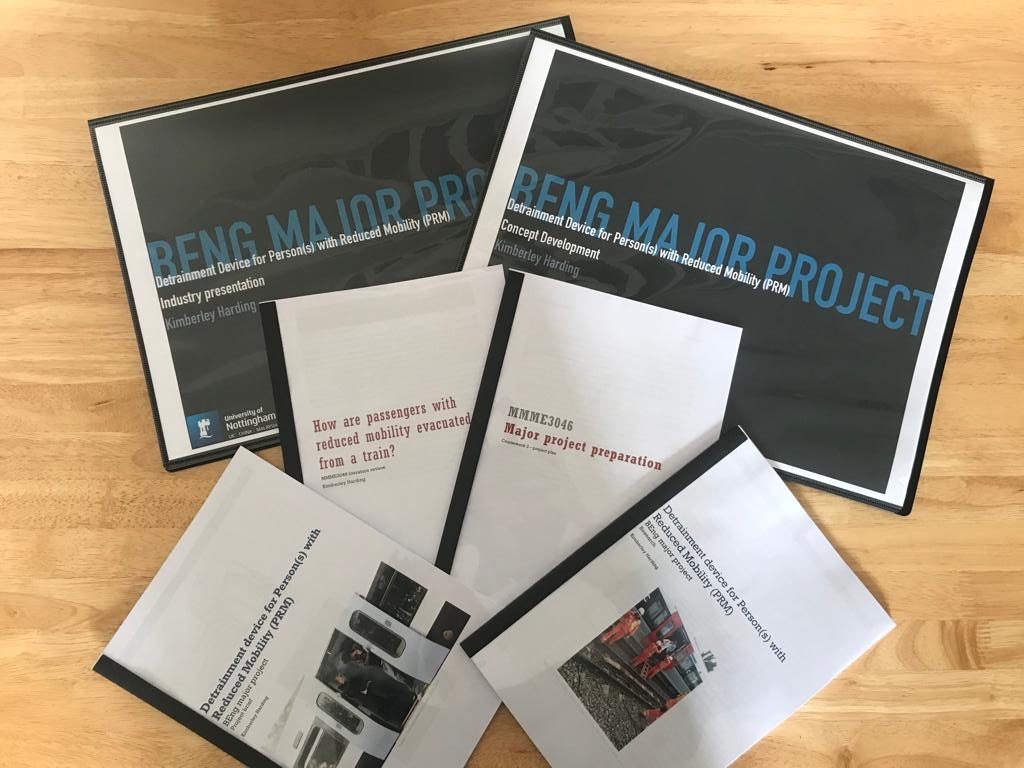By Kimberley Harding
Having grown up in a world of complex engineering concepts and innovative designs, I’m passionate about weaving accessibility and inclusivity into the fabric of everyday life. As a railway engineer of over ten years and a researcher specialising in design inclusion, ergonomics, and railway engineering, I greatly advocate for change and user-centred perspectives. With a degree in design and manufacture engineering, a master’s degree in railway systems engineering and integration, and an ongoing pursuit of a PhD in inclusive design for railway passengers, my journey has been guided by a deep commitment to creating a world where everyone is considered.

A Roots-Based Passion
The artistry of engineering intrigued me at an early age as I observed my dad’s work with London Underground. Witnessing intricacies and innovation, I became fascinated by engineering, holistic design, and cog-to-cog machine understanding. I developed a lifelong fascination for design by showing incredible minds in the engineering world, further captivated by their nuanced understanding.
Projects That Transform
Through my work, I have promoted accessibility and inclusivity in various ways. My goal has been to blend functional design with empathy. This includes revolutionising the detrainment process for passengers with reduced mobility to incorporating braille and easy-to-read design on packaging. My expertise has been applied to real-world challenges through collaborations with esteemed organisations like HS2, London Underground, Transport for London, Department for Transport and others.
I have been able to lay the groundwork for a more inclusive future through teaching at Masters’ degree. I aim to emphasise the importance of considering diverse needs, backgrounds, and abilities in every decision with interactive lectures, engaging discussions, and hands-on projects. This understanding can lead to a shift in mindset that goes far beyond the classroom if it is fostered early on.
Navigating Challenges, Shaping Solutions
The challenges involved in inclusivity are often a result of shifting mindsets and financial constraints. As a design engineer and ergonomist, I aim to bridge the gap between top-down design and user-centred design, believing that authentic human-centric design is non-negotiable as, with most things, humans interact with systems. It’s a journey that requires patience, persistence, and a constant reminder of the actual impact our work can have.
Lessons in the Unseen
As I’ve pursued my passion, I’ve realised that sometimes the most prominent issues are the ones that most easily get overlooked. Simple yet essential elements like toilets, ramps, braille and appropriate colour schemes can make all the difference. Throughout my career, I have realised the importance of a holistic approach considering diverse needs and desires.
Advocacy Beyond Boundaries
As well as projects, I am passionate about change. Collaborations with organisations like Great Ormond Street Hospital for Children have enabled me to bring this passion to a larger scale, understand more considerable intricacies, and conceptualise from a broader lens. The first step towards transformation is understanding and embracing differences, a principle I have taught through my work.
A Personal Connection
The diagnosis of a rare birth defect, Bladder Exstrophy, is one of the primary reasons for my inclusion advocacy. A condition in which my bladder was born on the outside of my body and inside out, I am one of only a few who does not use a wheelchair. A hidden disability has been an enormous asset, allowing me to see from the lens of a disabled person and that of a perceived able-bodied person. This connection motivates me to create significant change in the world, understanding first-hand what the benefits of good design are.

Towards a More Inclusive Future
My work aims to ignite curiosity, challenge norms, and foster a community that embraces everyone’s uniqueness. I envision a world in which holistic thinking is the norm.
For those who wish to contribute to inclusion and accessibility, my advice is simple: think beyond current boundaries and question everything. My journey through design and inclusion has been both eye-opening and humbling. As I continue to work in a space that can genuinely transform lives, I’m reminded that our actions, no matter how small, can enormously impact building a more accessible and inclusive world.
